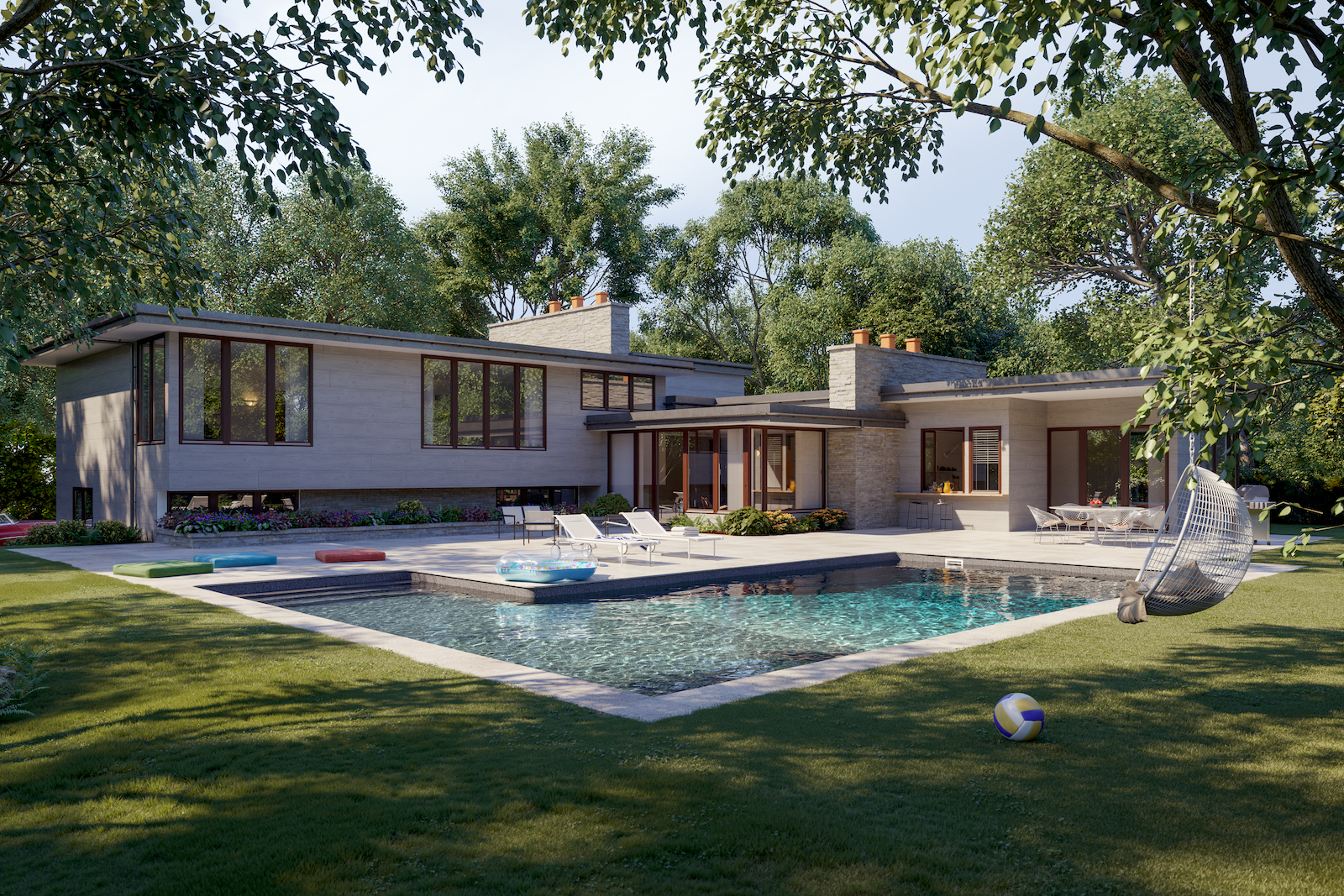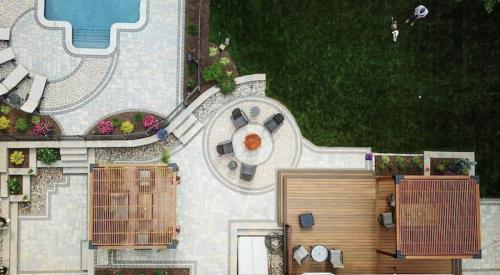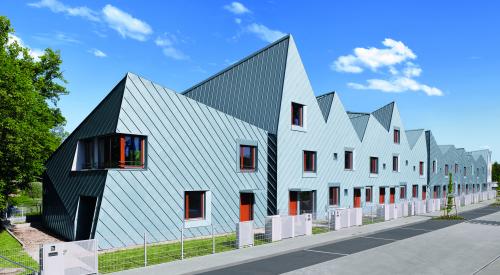As Americans remained cooped up indoors last summer, residential pool demand exploded. That demand remains for 2021, so here are some things to consider.
Pool projects boomed during shelter-in-place orders last summer after a slow April and May, reported Reuters. Demand grew so intense that pool materials, such as pumps and heaters, experienced major shortages. Homeowners waited for weeks last year to speak with pool installers for projects installers could only pen in for the following year.
But what should residential pros expect for pool demand in summer 2021? Leading in-ground residential pool manufacturer Latham says pool demand will remain for the foreseeable future, aided by the rise in outdoor living and an already established upward trend for pool demand.
“But the fact is, for Latham, we've been experiencing extraordinary momentum really for the last three years,” says Joel Culp, chief marketing officer for Latham. “There's no question demographic shifts towards investment around the home, and some other nice positive macros, are driving this trend. We think it will continue to experience this type of growth certainly for the next few years, if not beyond that.”
Outdoor living projects are top requests from homeowners, according to the National Kitchen and Bath Association’s annual design trends report. The report found 65% of surveyed professionals expect outdoor living project requests to increase this year.
For the professionals designing outdoor projects, pools, spas, and hot tubs were the fourth most popular project in 2020, following outdoor kitchens, patios/decks, and screened-in porches.
PRODUCTS chatted with Culp to see how pool demand has changed since the onset of the pandemic, standout trends, and how pools can be an opportunity for home builders. Here are five takeaways.
[ Read More: HOW TO BUILD KNOCK-OUT DECKS, PATIOS THAT HOMEOWNERS WILL ACTUALLY USE ]
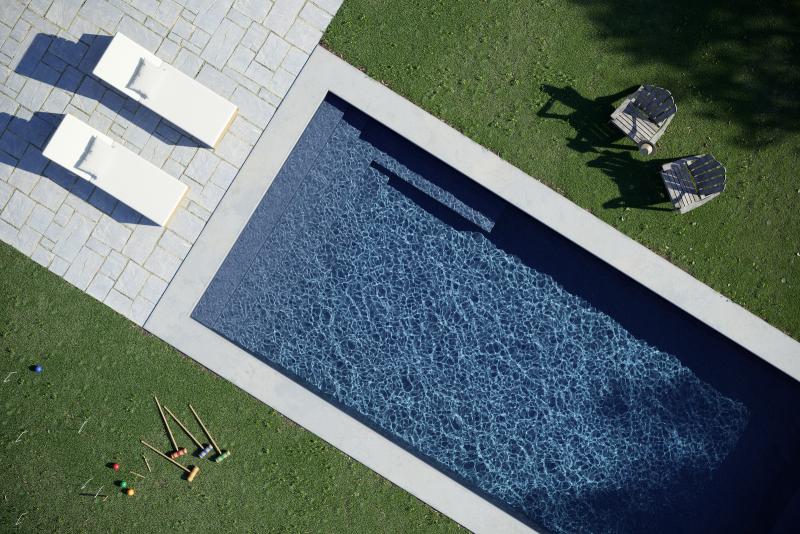
Photo: courtesy Latham
1. There’s a Noticeable Shift Toward Modern Pool Design
There are two basic types of in-ground pool choices, explains Culp: freeform and rectangular.
Freeform pools feature flowing lines and curves and are fit for homeowners wanting a natural look. These pools are designed into nearly any shape imaginable—within reason. But yes, Latham can even design and create a guitar-shaped pool if desired.
Rectangular pools feature 90-degree angles and increased perimeters, which fits in nicely with a modern design. This is why Culp says he’s seeing an increase in rectangular pools.
“The shape really conveys a sleek, modern feel, which is very much on-trend with today's new buyers,” says Culp. “So as we look at the business in shifts with respect to the form or the shape of the pool, we are seeing a slight shift towards more of the modern feel and more of the rectangles.”
But compared to freeform, rectangular pools only have a slight step up. The increase in rectangular pools are mainly seen in areas such as California, Texas, and Florida. Other regions, such as the Midwest, maintain a strong demand for freeform, according to Culp.
“If you ask me the question five years from now, I'm sure there's going to be more of a trend towards the rectangular collection,” says Culp.
[ Read More: 5 LANDSCAPING TRENDS YOU SHOULD KNOW FOR 2021 ]
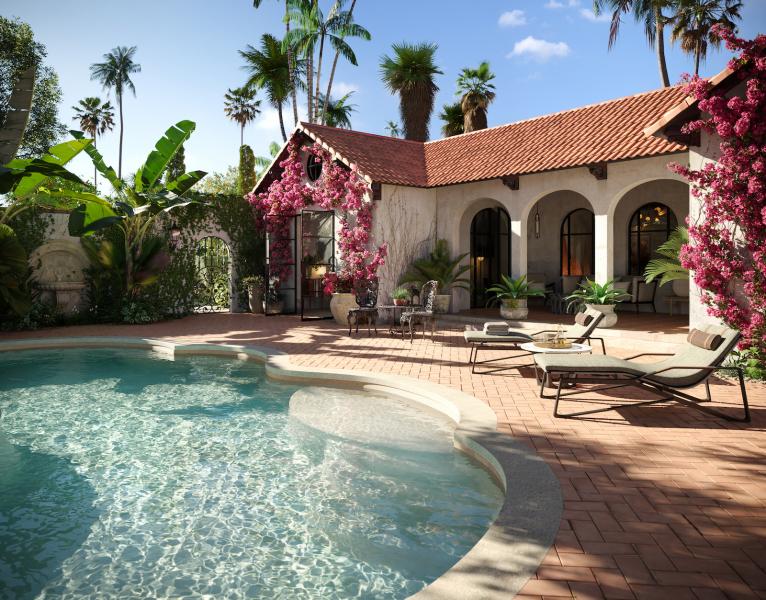
Photo: courtesy Latham
2. Homeowners are Engaging in Overall Customization
Pools are the centerpiece of the backyard, and homeowners are giving this centerpiece the attention it deserves. Overall, Culp notices more homeowners thinking about their pools in ways they did not before. This deep thought about pools drives homeowners to engage in customization and personalization. The process first starts with the purpose, which ranges from general wellness to entertainment.
“It's becoming much more than a vessel,” says Culp. “It's more about the entire experience [and] how they plan to use the pool. It's the centerpiece of the backyard. So all these other amenities, everything from the island and the decking to the hardscaping, really revolves around the pool. I think that's probably the biggest shift ... people are designing their entire space around the pool.”
The pool has now transformed from a utilitarian place to send the kids to an addition to the homeowner's lifestyle.
[ Read More: 9 PRODUCTS TO ELEVATE OUTDOOR KITCHENS ]
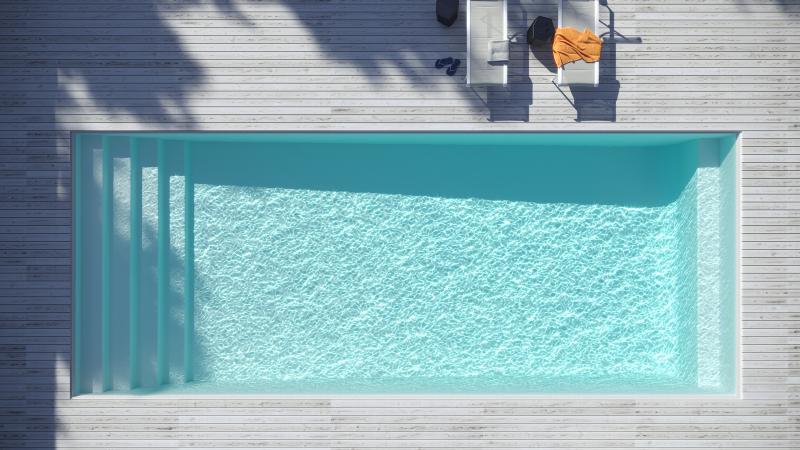
Photo: courtesy Latham
3. Trending Add-Ons
Some of the most popular additions to a standard pool are water levels, water types, lighting, and even the color of the pool water.
Culp says Latham has seen an increase in requests for higher water levels. Typically pools feature a 6- to 8-inch waterline, leaving a few inches from the edge to the water level. Today, more homeowners are opting for no water lines.
Homeowners are paying close attention to the materials, finish, and color of their pools as well.
The color of pool water can impact its overall appearance and how its owner perceives it. Culp says many of the questions about pool colors revolve around the location. Water color is different in the Pacific and Cape Cod, for example.
“When I got to Latham a few years ago, I realized that one of the things that the industry was underestimating was the power of color,” says Culp. “It’s really what people want and we know from our research that colors is one of the one of the top main factors people consider when purchasing a pool. And what we found is they just really want to step back and have something that's aesthetically pleasing and aspirational.”
Blue remains the standard choice for pool water, but more homeowners want different shades of blue, and some are leaning toward different material colors to impact the color of the water. More homeowners are opting for white, shell grays, and sandstone.
The growing importance of pool color has influenced Latham’s product releases. Reflection is an important aspect of pools as well, Culp notes, which is why Latham created a new collection with enhanced reflectivity and unique color offerings.
[ Read More: POPULAR DECKORATORS COMPOSITE DECKING NOW APPROVED FOR CLADDING ]
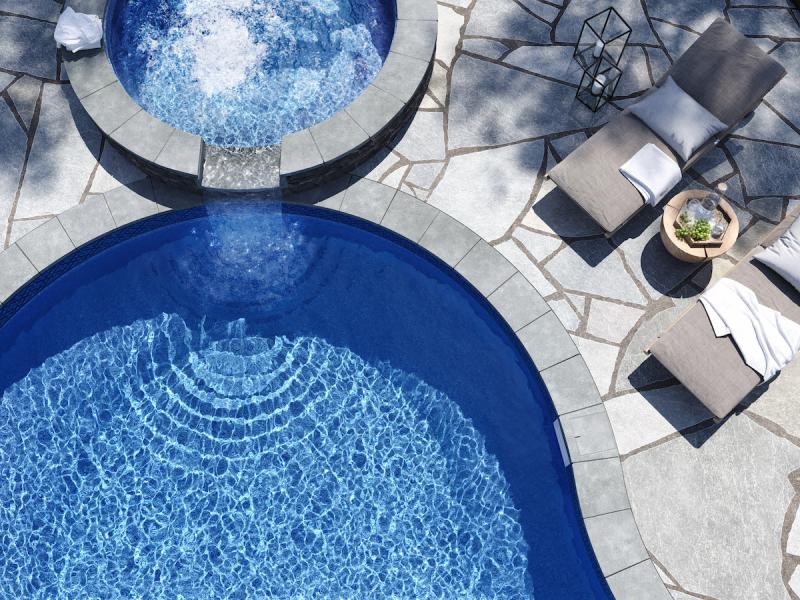
Photo: courtesy Latham
4. With Advanced Materials Come More Opportunities
Thanks to advancements in pool materials, homeowners and residential professionals are no longer stuck with concrete pools that take extra labor and time. Fiberglass opens up more opportunities for builders, says Culp, because of its design possibilities and installation time.
Latham offers vinyl and fiberglass pools, and Culp notes that fiberglass is the current go-to material. Fiberglass pools are the easiest to maintain, most durable, and most customizable. Vinyl liner swimming pools are more affordable but still deliver a high-quality pool, and they can be installed in just a few days.
A large majority of pool projects occur at homes that are at least one year old, but Culp says there is a new shift toward pools in new construction.
“Builders are interested in offering pools in their homes,” says Culp, “because there's a great opportunity for builders to capitalize on this on this upgrade.”
Historically, new home builders have been reluctant to install pools because of the cost and time associated with installation. But things are changing. Fiberglass pools have emerged as a lower-cost solution, and faster installation times, design options, and financing now make pools attractive builders and their buyers.
“We have builders that install fiberglass pools [and] they're in and out a week,” says Culp. “With the emergence of fiberglass and how beautiful these pools are, new residential builders are discovering this. In fact, at the International Builders Show next year you'll see Latham there because we're being asked now more and more to present programs to the builders because fiberglass solves so many of the incumbent issues that builders would deal with with a one-off pool.”
[ Read More: CAESARSTONE RELEASES FIRST EVER OUTDOOR QUARTZ SURFACE COLLECTION ]
5. Tips for Designing a Pool to Match a Backyard’s Aesthetic
Culp’s first tip for matching a backyard design with a new pool is to work with the pros. Working with a dealer, designer, architect, or pool builder will help guide clients through the process.
Second, there is an abundance of inspiration and possibilities for pool design, so builders should explore their options in architecture and design magazines, on supplier’s websites, and other resources.
“But I love telling people to just start with inspiration,” says Culp. “Think about what the pool is going to be used for, who's going to use the pool, and then you can start thinking about the shape and the style and how it fits in your backyard. What features do you want, what backyard amenities do you want? And it just all will come together if you're working with the right manufacturer and the right dealer.”
